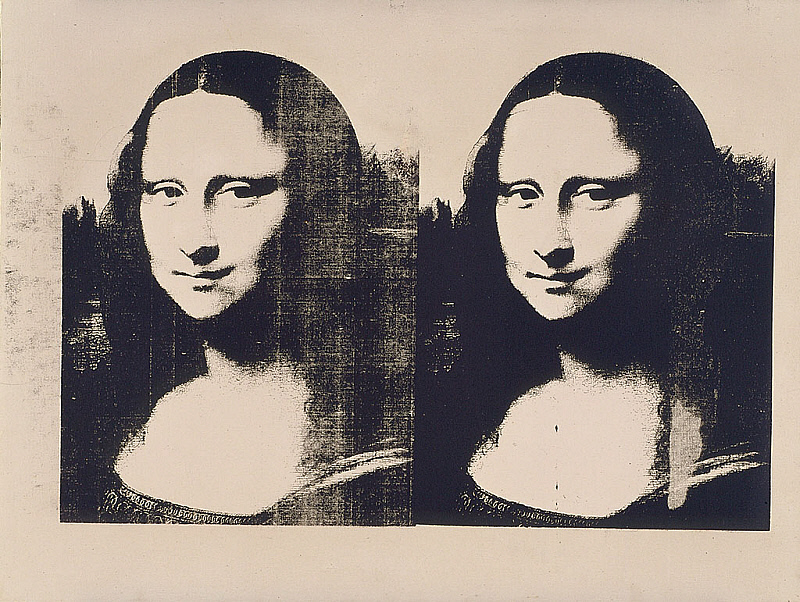In Double Mona Lisa, 1963, Andy Warhol presents two close-up views of Leonardo da Vinci’s Mona Lisa, an icon of the Italian Renaissance and perhaps the most famous painting in the world. The choice of subject was an apt one for Warhol, who harbored a deep fascination with the idea of celebrity. The previous fall, he had produced dozens of portraits of Marilyn Monroe and Elvis Presley for his first solo exhibition in New York.
In 1963, Leonardo’s Mona Lisa reached peak celebrity in the United States. The painting made its first and only voyage to the United States the previous December to be exhibited at the National Gallery of Art in Washington, D.C., and at the Metropolitan Museum of Art in New York. Unveiled to an audience of 2,000 diplomats and politicians, including President Kennedy, the painting was declared the “temporary but undisputed queen of Washington society.” The trip—a project proposed by First Lady Jacqueline Kennedy, who would herself soon become one of Warhol’s favored subjects—marked the first time the painting had left France since its infamous theft in 1911, and it was treated like a ceremonious state visit: conveyed across the Atlantic by ocean liner, transported to and from New York by armored van, installed behind bulletproof glass, and flanked by rifle-bearing Marines. On one, record-breaking day in New York, almost 64,000 people saw the painting.
Warhol completed approximately ten Mona Lisa paintings, and the series represents one of his earliest engagements with the silkscreen printing technique that would become his signature. The process allowed him to quickly and easily transfer preexisting, photographic imagery to a canvas, creating paintings free of gestural brushstrokes or indeed any sign of the artist’s hand. As Warhol famously quipped in 1963, “The reason I'm painting this way is that I want to be a machine.” In his Mona Lisa series, Warhol used the three views of the painting reproduced in a Met Museum brochure, deliberately tethering his work to the portrait’s United States trip. In addition to the cropped, bust-length view of the sitter, the brochure included a view of the entire composition and a close-up of the figure’s hands, which appear in other Mona Lisa variants.
Double Mona Lisa thus combines two of Warhol’s key pursuits: a fascination with fame in American culture and a desire to use “readymade” imagery. By rendering the Mona Lisa in black and white, and then doubling it, he gave the work the appearance of a cheap reproduction, emptying the original of its auratic grandeur. In so doing, Warhol presses on questions about artistic innovation, authorship, and the idea of “genius.”

